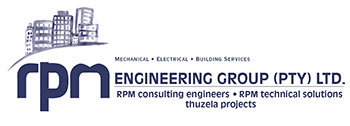I must confess to being an avid armchair pilot. The two local aviation magazines are my favourite reads, fulfilling my life-long interest in all things avionic.
Their subject matter is always of great interest and the featured articles amusing as they are informative.
The fairly recent coverage of the new St. Helena Airport was certainly a revelation in how not to approach a potentially risky project, a hard lesson to all budding Engineers, Project Managers and Developers.
In its own way, it brings home the absolute necessity to investigate every project fully, taking all possible factors into account before commencing with the detailed design.
Imagine a Developer building a 50,000m 2 retail mall on the outskirts of Blikkiesdorp in the Great Karoo.
In all likelihood it will fail dismally, becoming yet another white elephant. Yes, it would certainly create a lot of work for the locals in the short term, but destined to fail in the sustainability stakes.
Now both flying magazines include amongst their read worthy articles, advertisements featuring a vast array of light aircraft for sale, from fixed wiring propeller driven aircraft to turbine driven corporate jets, even gliders and helicopters, all on sale for sizable sums of money.
As it may, I study these aircraft adverts with great interest with the notion I suppose, of one day owning one. Dream on McDuff. Nevertheless, what fascinates me the most, is the longevity of the aircraft on sale, some as old as 65 years and many in the 30 and 50 year age bracket, all commanding top dollar.
The reason for this is as plain as the nose on your face. It’s called maintenance and I mean, proper scheduled routine mandatory service. These, dare I say “vintage” aircraft, are all in pristine condition, capable of providing a further 20 to 30 years of faithful service.
Now show me an airconditioning plant of equivalent age and condition and I’ll show you a pink pig with wings, with a little bit of rocking horse poo thrown in for good measure.
Clearly the reason why an aircraft achieves such incredible service life can be attributed to the safety aspect. Safety on the ground and in the air is of paramount importance, hence the almost paranoid need to service the equipment properly, without compromise or shortcuts.
Ok, now you’re starting to catch my drift.
Let’s compare a normal well designed office building with an aircraft in service on any local or international route, be it ferrying passengers or freight.
The aircraft is comfortable, clean, well ventilated and above all, safe. It is managed by a well-trained on board crew from the Captain to the most junior cabin assistant. Everything works like clockwork.
All services are fully functional, communication systems are in place and all mechanical and electrical components working like a Swiss watch.
Take a while to contemplate all that can go wrong during the flight. Think of all the hundreds of thousands of components that can fail at any time, placing the passengers and crews safety at risk.
They simply don’t fail because they are fastidiously checked and serviced in accordance with strict schedules and maintenance logs. When people’s lives are at stake, no effort is spared in ensuring
safety at all costs.
Now the typical corporate office building is equally comfortable, it’s cleaned daily and filled with people 8 to 9 hours every day. It is managed by a well-trained facilities management team headed up by the Portfolio Manager.
But here’s where the comparison parts ways.
The HVAC is mediocre at best, the lifts are problematic, the electrical systems are suspect and fire protection non-compliant.
Nevertheless, lets for now concentrate on our own discipline for the moment. The fact is, HVAC systems are notoriously neglected by the Landlord and his Managing Agent (with notable exceptions I must add).
They are just too costly to maintain properly as required. This unfortunate situation has resulted largely in the demise of the HVAC maintenance and service sector, to the extent that the required level of expertise is generally no longer available.
HVAC is considered by some to be a grudge purchase, a necessary evil if you will. Call it what you may, HVAC is not afforded the attention it deserves, despite being the most important building service.
Again I indulge your imagination. Imagine the office building to be an airliner enroute to Cape Town, the office workers now passengers, the facilities manager and his team the flight crew.
At the risk of falling out of the sky, the building maintenance would be ruthlessly and vigorously applied, you can bet your bottom dollar on that. Cost would be no object, with happy and satisfied passengers (Tenants) throughout the commercial world.
Alas, buildings are not aircraft and we, the Tenants, are just people on the ground.
Building maintenance is therefore not a priority and as such it is not readily, forthcoming. Only if the Tenant’s safety is compromised, would maintenance receive the attention it deserves.
In saying that, I leave the Landlord and his Managing Agent to ponder the situation.
In any event, (with some noticeable exceptions as I said earlier) acceptable HVAC maintenance standards are now generally non-existent.
Whilst they need not be to aviation standards, HVAC maintenance standards certainly need to be uplifted and improved upon.
It would seem to me that only when lives are at stake, are we prepared to do what it takes. HVAC on the other hand poses no “obvious” life-threatening risk.
Enough said.
Patrick Burke




